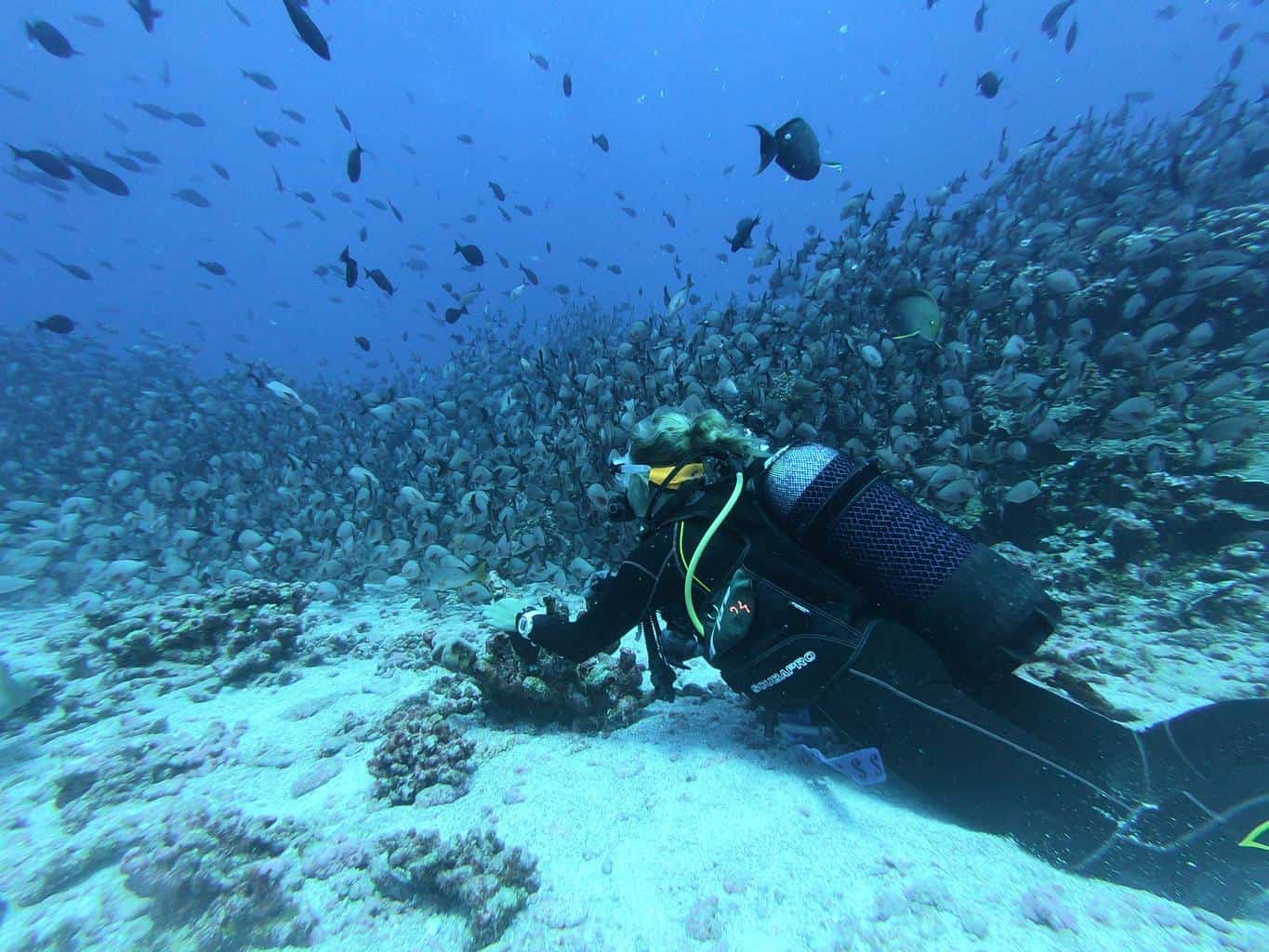Scuba diving can be so much fun that it’s possible to get carried away and forget yourself.
Sometimes we can all use a few reminders of what’s important so as not to annoy our buddy, fellow divers, and the Divemaster – or worse, put ourselves at the risk of an accident.
Let’s look at some crucial mistakes you don’t want to make on your next dive and why they’re essential to avoid.
Some might be no-brainers, some are for safety, while others keep you from becoming unpopular on the dive boat, but these are all important things not to do when scuba diving.
- 1. Going Too Deep
- 2. Forgetting to Check Your Air
- 3. Not Tracking No Decompression Time
- 4. Not Keeping Good Buddy Contact
- 5. Not Considering Other Divers in a Group
- 6. Ignoring the Divemaster
- 7. Not Prioritising Buoyancy Control or a Good Dive Profile
- 8. Getting Too Distracted by Your Camera
- 9. Touching or Feeding Wildlife
- 10. Not Following Local Rules
- Conclusion
- You Might Also Like…
Disclosure: this post contains affiliate links (clearly marked with ), which means we may earn a commission if you buy something through them, at no additional cost to you.
1. Going Too Deep
All divers have a depth limit depending on their certification and experience, and it’s wise not to exceed it.
In general terms, for recreational scuba diving, the depth limits that are normal are:
- Open Water Diver – 60 ft / 18m
- Advanced Diver – 100 ft / 30m
- Deep Recreational diver – 130 ft / 40m
There can also be local regulations, dive center depth rules, or site-specific limits that should also be followed and might actually be shallower than your certification depth.
If you’re unsure, don’t be afraid to ask what the dive’s maximum depth should be, and remember to make a careful mental note to remember and dive no deeper.
It’s important to understand that the deeper you go, the more likely you are to have problems that could include:
- The deeper you are, the faster you use your breathing gas
- The greater the depth, the faster no decompression time runs out
- Nitrogen Narcosis will affect you more at depth
- Your diving insurance might not be valid if you go beyond your certification depth
Going deep (even within your limits) should usually be reserved for a specific reason, such as a particular point of interest, and should be planned correctly.
Deep dives just for the sake of it will be shorter and could also be riskier.
2. Forgetting to Check Your Air
Having air to breathe is vital and while above water, we don’t have to think about it.
Underwater, we certainly do.
Checking your air frequently is one of the most important things you should do on a dive.
We can still enjoy ourselves, look at the wildlife and take photos.
We just need to remember to take a look at our gauge periodically.
Not checking your air can lead to dramatic out of air emergencies, but more commonly, leaving it too late to check and eventually taking a look causes stress and a rapidly ending dive when you finally notice you’re low.
Remember that the deeper you go, the faster air is used, so you need to check more regularly.
With experience, you can get a feel for how fast you use your air at a given depth, but this isn’t a reason not to keep checking.
Different circumstances, like swimming in a current, can make a massive difference to how fast you use your air and could catch you out.
Keep a good watch on your air, and don’t forget to communicate with your buddy and check how much they have as well.
3. Not Tracking No Decompression Time
No decompression time is the maximum amount of time we can spend at a given depth as recreational divers before we need to end the dive and make our slow ascent to the safety stop and surface.
Historically the time had to be worked out before the dive with a dive table, and the dive plan needed to be followed underwater with a depth gauge and timer.
Fortunately, most divers now have dive computers, and these make managing decompression time easy, but only if you know how your computer works and remember to look at it.
Your dive computer will display the remaining time left for the depth that you’re currently at.
At the start of the dive, when you’re shallow, there might be so much time left it can’t fit onto the computer’s display.
But as you go deeper, the computer will show you the time left for the dive, and as you go further or stay at a depth, this time will reduce.
Just like your air, decompression time will reduce faster the deeper you are.
As you start to ascend, the time left will reduce more slowly or even increase, allowing you to spend time in shallower water, but only if you have sufficient air left.
If you do run out of decompression time, then you will need to make a mandatory decompression stop to stay safe which could then cause problems from not having sufficient air.
Computer diving makes managing your decompression time safely very easy, but only if you know how your computer works and remember to look at it!
4. Not Keeping Good Buddy Contact
Remember that the buddy system is designed so in the event of a problem, your buddy is there to help you, and you’re there to help them.
Keep close enough to your buddy so that you could reach them safely in the event of an emergency.
Consider how far you can swim comfortably underwater if you should be unfortunate enough to suffer an o-ring failure and start to lose your air quickly.
You should be closer to your buddy than that!
Make sure you communicate together by checking periodically that each other is OK, ask how much air they have so you both know if you need to end your dive soon, and even remember to show your buddy anything interesting you find underwater so they can share the discovery.
Losing your buddy underwater can cause a lot of stress, so make sure even when taking photos that you know where they are at all times.
You never know when you might need them.
5. Not Considering Other Divers in a Group
If you’re diving in a group, take a moment to consider their enjoyment of the dive as well as your own.
You’ll still have a buddy within the group and so should dive with them, as well as following the group in general.
Stay with the group, and don’t stray so far that you cause them to have to stop to look for you.
If someone spots something exciting underwater, don’t crash through the rest of the group as if you’re the only one there.
With patience, usually, everyone can have a chance to check out the sighting.
Be aware of other divers’ personal space and allow them to enjoy the dive too.
Pace yourself to the group’s speed, and it’ll be more enjoyable for everyone.
6. Ignoring the Divemaster
When diving with a Divemaster, remember that they’re there to help you get the most from the dive.
Whether it’s using their knowledge of the site to show you the cool stuff or keeping you safe from straying into tricky currents, you should trust them and respect their experience.
While you don’t necessarily need to look closely at everything they spot, it’s worth acknowledging when they’re trying to get your attention, as it might be something you want to look at.
If the Divemaster is signaling for attention, always check what it is as it could be an important safety message they’re trying to get across, such as turning the dive due to a strong current.
Don’t risk continuing to take photos and ignore what could be an urgent message.
It’s also not a great idea to go ahead of the Divemaster on a guided dive.
Not only does this make it more difficult as they have to check on divers ahead and behind, but it also means that they can’t help guide you across the site and avoid any potential hazards.
Stick to whatever they’ve asked in the dive briefing, and you should have a great time.
7. Not Prioritising Buoyancy Control or a Good Dive Profile
Sound buoyancy control underwater helps you get the most from the dive, keeps you safe and helps to prevent any damage to the aquatic environment.
Within a group dive, managing your buoyancy means that you won’t be going up and down too much or crashing into other divers.
Remember that too many ascents and descents in your dive, otherwise known as a saw tooth profile, can make you more susceptible to decompression sickness.
A good dive profile should, where possible, consist of a controlled descent to your maximum depth, time at depth, and a slow, controlled (possibly multi-level) ascent to your safety stop and the end of the dive.
Poor buoyancy control, or lack of attention to buoyancy, can cause damage to the fragile environment that we all want to avoid, so make sure to stay well away if you’re having a little trouble or are less experienced.
8. Getting Too Distracted by Your Camera
Everyone likes to take photos underwater.
It’s a great way to preserve and share your memories, and for some people, it can become one of the things they enjoy most about diving.
But it’s important not to let your camera rule the dive.
Remember to prioritize buddy (and maybe group) contact, checking air and remaining dive and decompression time, and buoyancy over taking photographs.
We all want to get great photos, but don’t make that final snap have the cost of looking away from the camera and releasing that your buddy is nowhere to be seen just at the moment you realize that you’re low on air!
9. Touching or Feeding Wildlife
As a general rule, responsible divers do not touch, interfere with, or feed wildlife.
Most aquatic life injuries to divers will happen because animals are trying to defend themselves from feeling threatened.
Being respectful, keeping a reasonable distance, and not touching animals is the best way to prevent problems.
Remember too that touching animals, including corals, can injure and damage them also.
Feeding animals can upset the fragile ecological balance underwater, and it can also cause aquatic life to associate divers with food, which could create other, potentially dangerous problems.
We should take only photos and leave only bubbles.
Look, but don’t touch, and everyone can enjoy the dive.
10. Not Following Local Rules
Especially when visiting a new location, make sure that you’re aware of any local rules and regulations concerning diving.
For example, some locations have restrictions on the use of individual pieces of diving equipment.
While in the Maldives, “Reef Hooks” are actively encouraged, they are specifically not allowed in the Egyptian Red Sea.
National park areas or other protected locations might have specific rules that need to be followed that are different from even neighboring places that you might be familiar with.
Take the time to learn about the rules of the location and follow them to be respectful and not have any problems.
Conclusion
Usually, we just need to apply some common sense and remember our training to stay safe and have fun underwater.
But we can all use a reminder sometimes, so check out our list of things not to do when scuba diving occasionally, and you’ll be a great buddy that people want to dive with again and again.
You Might Also Like…
-

How Do Scuba Divers Drink Water? 5 Possible Ways (+7 Tips)
-

How Long Can Scuba Divers Stay Underwater? (+9 Limiting Factors)
-

Are Scuba Divers Athletes? All the Facts (+New Competitive Forms)
-

Are Sharks Scared of Scuba Divers? (What Every Diver Must Know)
-

Who Should Not Scuba Dive? 17 Reasons (Every Diver Should Know)
-
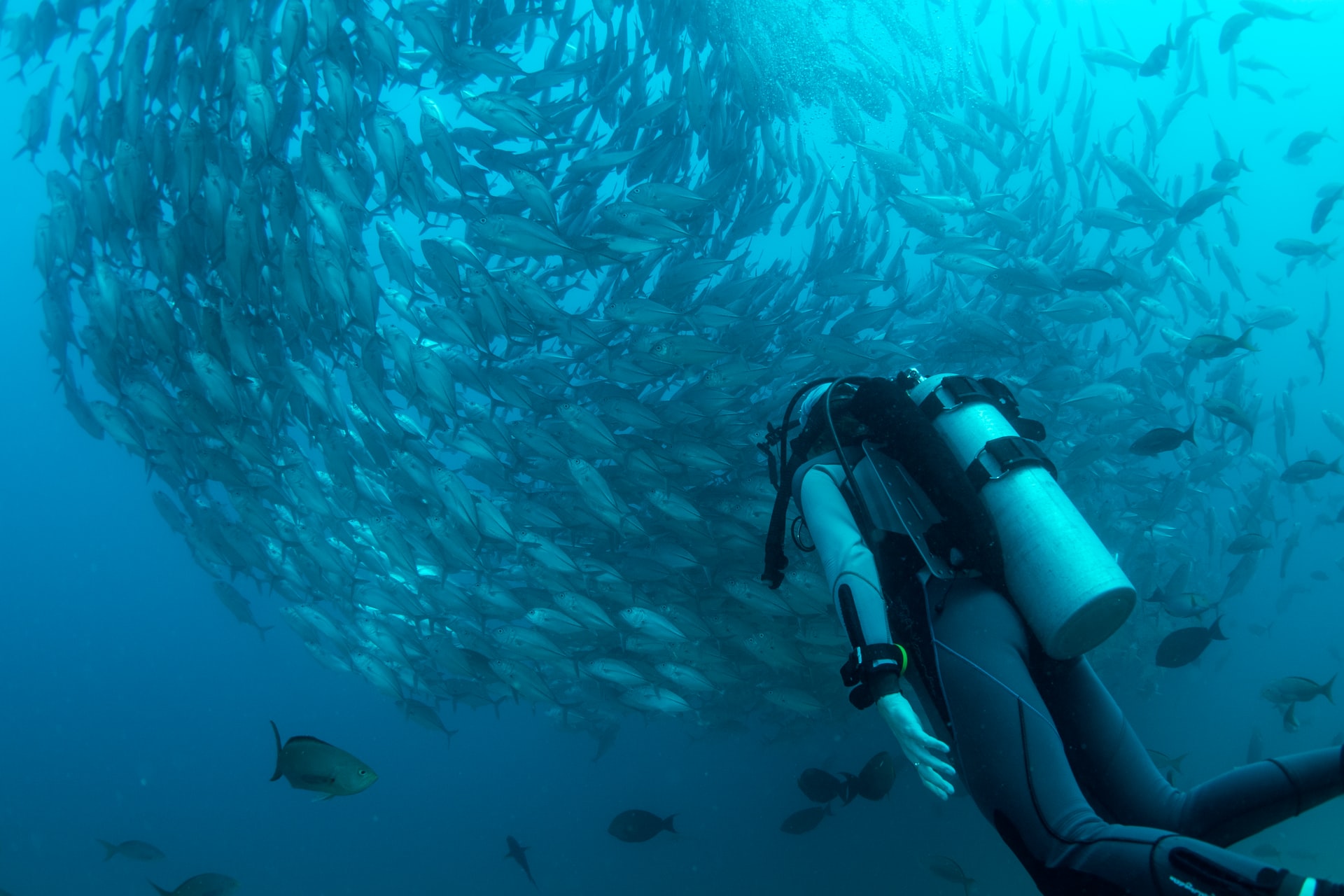
Should I Be Scared of Scuba Diving? 8 Common Fears (Debunked)
-

Why Do Scuba Divers Use More Air at Depth? (+4 Practical Tips)
-
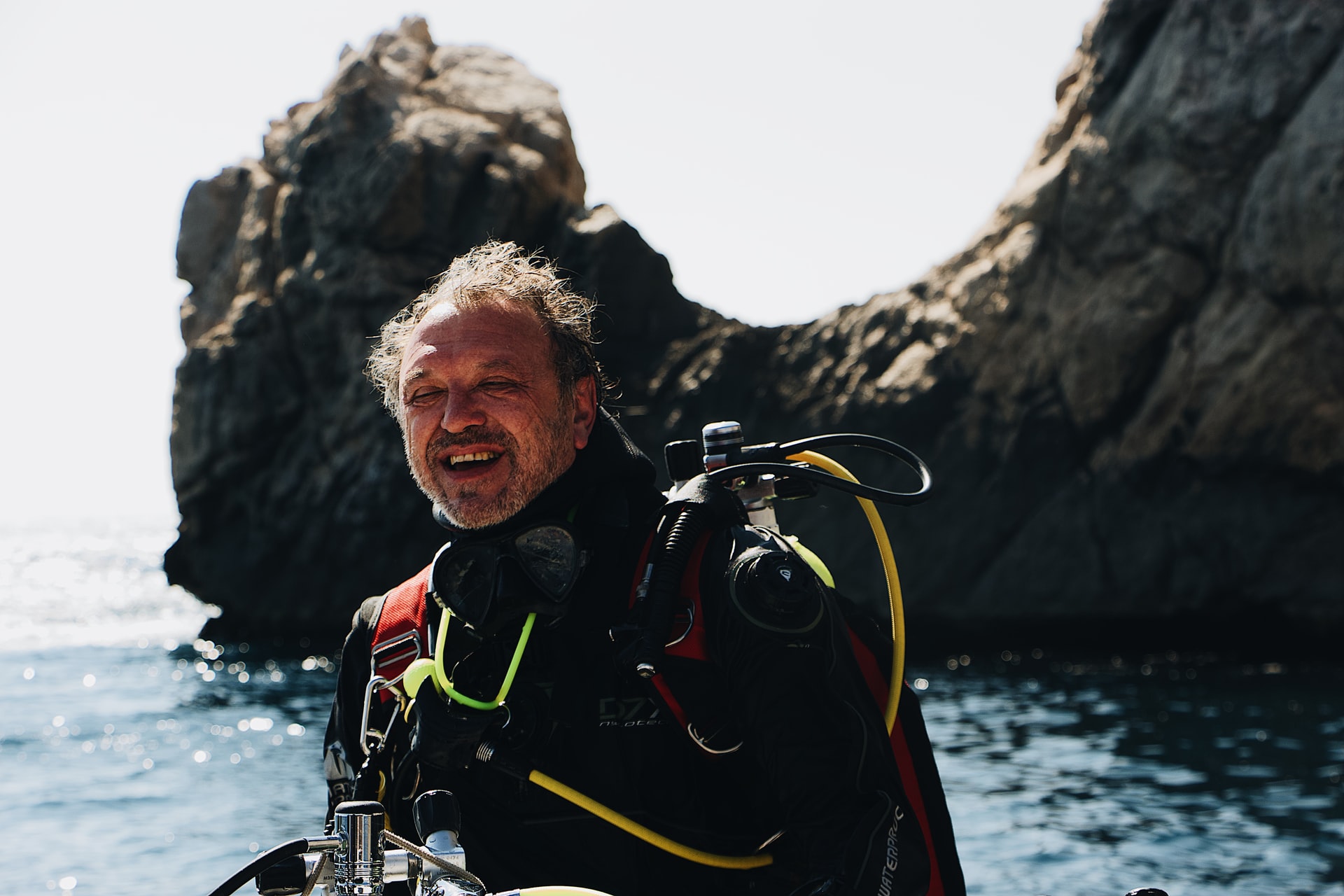
At What Age Should You Stop Scuba Diving? (+9 Tips for Older Divers)
-
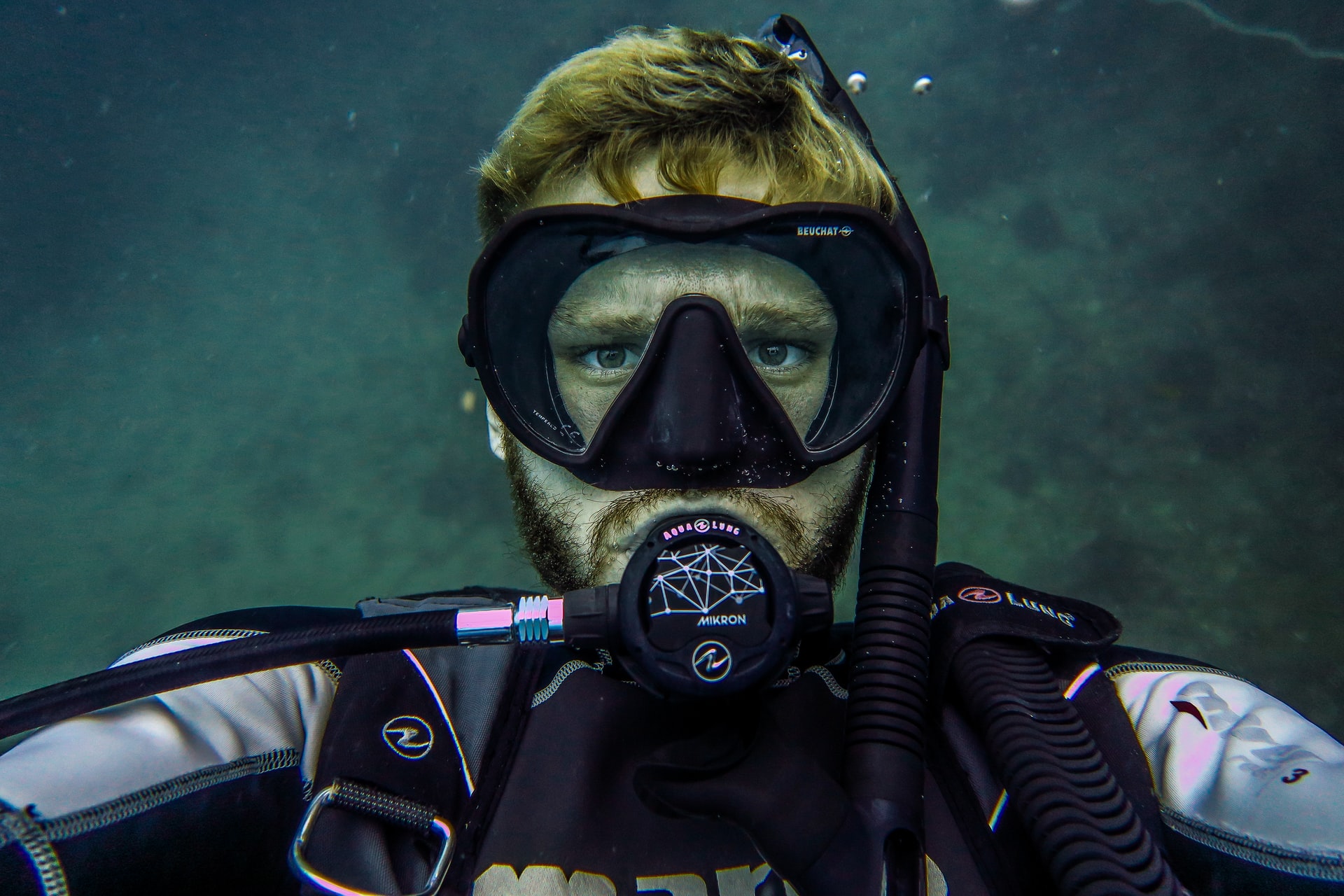
Should I Shave Before Scuba Diving? Crucial Facts (+9 Helpful Tips)
-

Why Do Scuba Divers Use Helium? (+Its Pros & Cons)
-
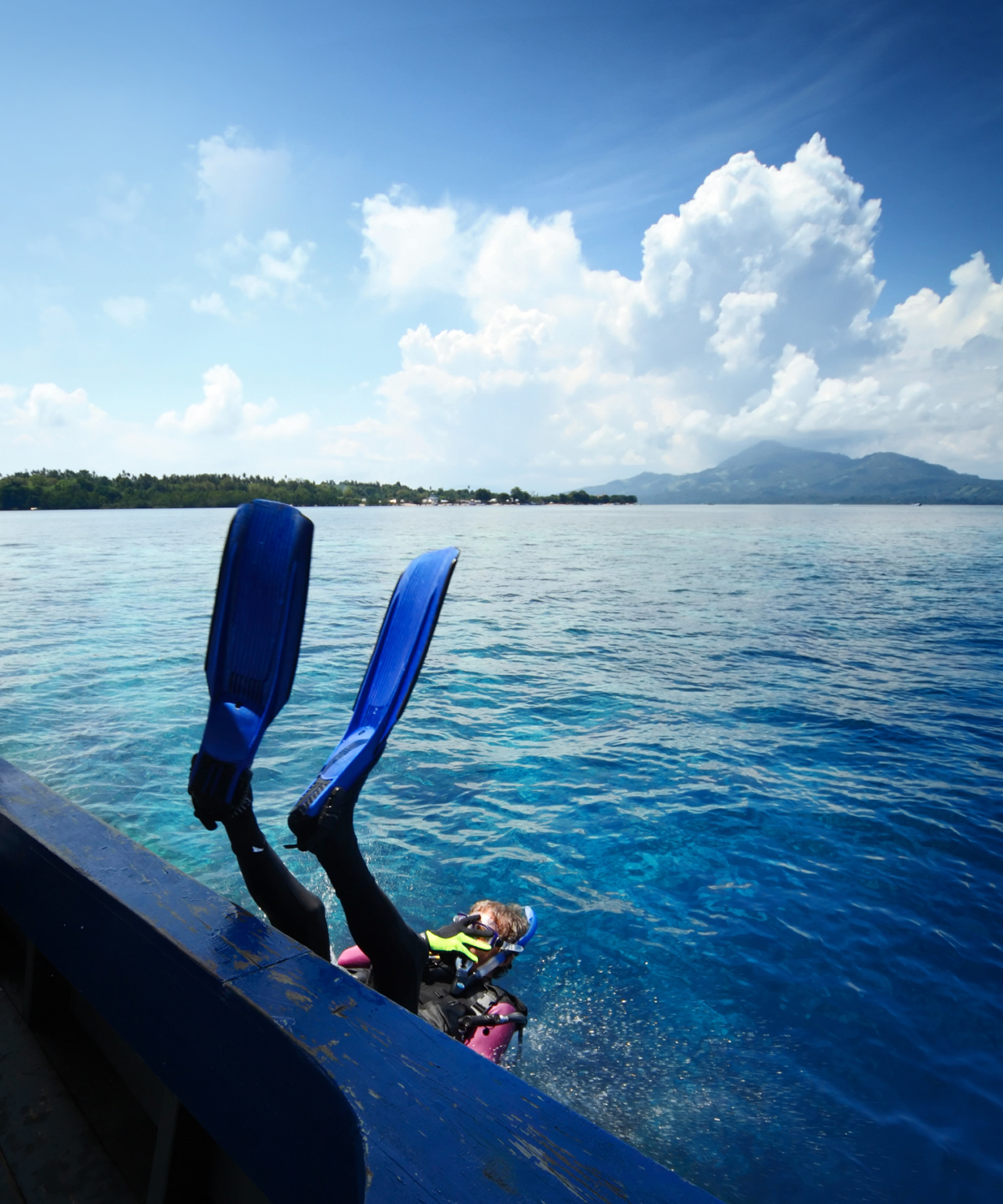
Why Do Scuba Divers Go in Backwards? (+3 Alternative Entries)
-

How Do Scuba Divers Sink and Float? (+Tips to Get It Right)

